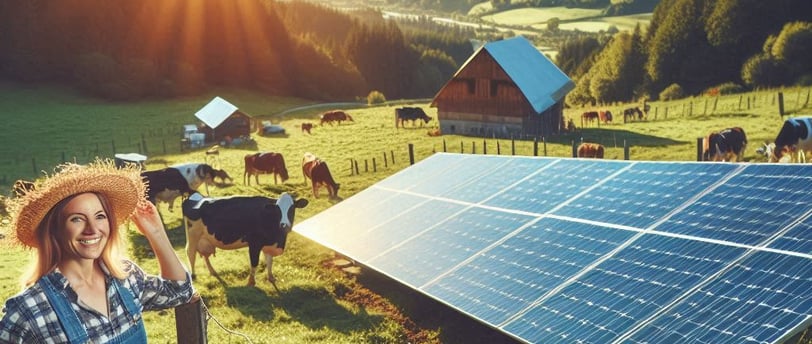The Perfect Combination: Solar Panels and Agricultural Grazers for Sustainable Farms
5/6/20242 min read


Why Solar Panels and Agricultural Grazers are a Perfect Fit for Farms
Farming is an essential industry that plays a crucial role in feeding the world's population. However, traditional farming practices often have a significant impact on the environment, contributing to greenhouse gas emissions and depleting natural resources. To address these challenges, many farms are turning to sustainable solutions, such as solar panels and agricultural grazers, to reduce their carbon footprint and enhance their overall efficiency.
1. Solar Panels: Harnessing Renewable Energy
Solar panels, also known as photovoltaic (PV) systems, are an excellent choice for farms looking to transition to clean energy sources. By harnessing the power of the sun, solar panels generate electricity without emitting harmful greenhouse gases. This renewable energy source offers several benefits to farms:
a. Cost Savings: Solar panels can significantly reduce a farm's electricity bills by generating power on-site. With the right system size, farms can even produce surplus energy that can be sold back to the grid, providing an additional source of income.
b. Energy Independence: By installing solar panels and battery systems, farms become less reliant on the power grid, ensuring a stable and consistent energy supply. This independence is particularly advantageous in rural areas where power outages can be frequent.
c. Environmental Impact: Solar panels produce clean energy, which helps reduce greenhouse gas emissions and combat climate change. By adopting solar energy, farms can contribute to a more sustainable future for agriculture.
2. Agricultural Grazers: Sustainable Land Management
In addition to solar panels, incorporating agricultural grazers, such as sheep and cows, into farming practices can have numerous environmental and economic benefits:
a. Natural Weed Control: Grazing animals can help control weed growth naturally, reducing the need for chemical herbicides. This method is not only environmentally friendly but also cost-effective for farmers.
b. Soil Fertility: Grazing animals provide natural fertilizers through their manure, which enriches the soil with essential nutrients. This improves soil fertility and reduces the need for synthetic fertilizers, minimizing the risk of nutrient runoff into water bodies.
c. Biodiversity Conservation: Grazing animals can help manage grasslands and prevent the encroachment of invasive plant species. This promotes biodiversity by preserving native vegetation and creating habitats for various wildlife species.
Why Farms Need to Go Solar
The combination of solar panels and agricultural grazers presents a compelling case for farms to embrace renewable energy solutions. By going solar, farms can achieve:
a. Sustainability: Solar panels and agricultural grazers align with the principles of sustainable farming, reducing the environmental impact of agricultural practices and ensuring the long-term viability of the farm.
b. Cost Efficiency: Solar panels help farms save on energy expenses, while agricultural grazers offer natural weed control and fertilization, reducing the need for costly chemicals and synthetic inputs.
c. Positive Public Image: Embracing sustainable practices can enhance a farm's reputation, attracting environmentally conscious consumers and potential business partnerships.
In conclusion, the integration of solar panels and agricultural grazers represents a powerful synergy for farms. By harnessing renewable energy and adopting sustainable land management practices, farms can reduce their carbon footprint, enhance their efficiency, and contribute to a more sustainable future for agriculture.
